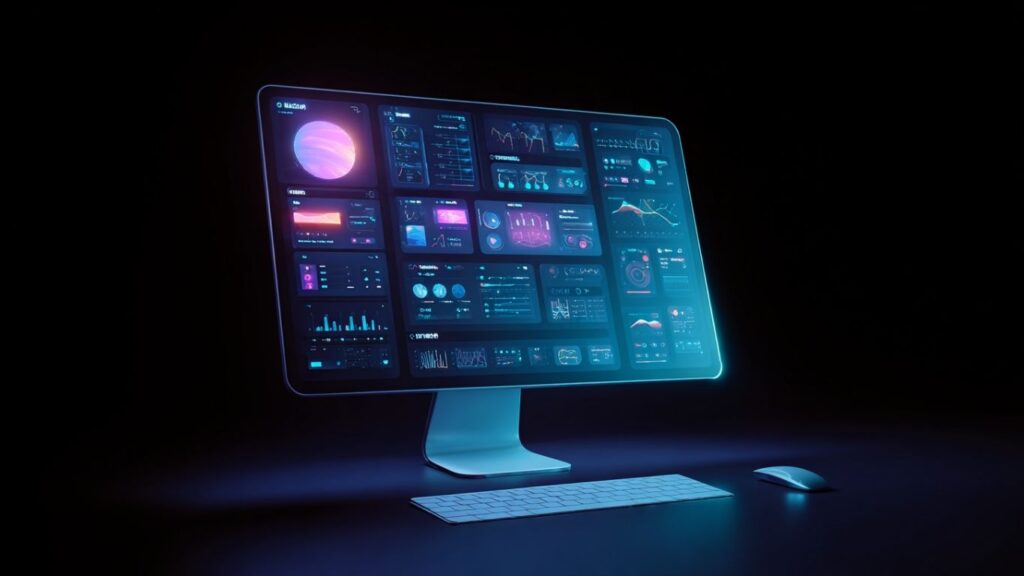In the creative world of 2025, design is no longer limited to professionals with years of training or expensive software. Thanks to tools like Canva, the barrier between beginners and polished visual design has all but disappeared. What once required mastery of complex programs can now be done in minutes with drag-and-drop ease, AI-powered suggestions, and integrated productivity tools.
According to Stanislav Kondrashov, the rise of Canva represents a cultural shift toward democratizing design. He remarks that “design tools no longer belong exclusively to experts—they belong to everyone with an idea and the willingness to create.” Kondrashov goes on to say that Canva’s innovations, especially its latest AI-powered features, have turned creativity into an accessible skill rather than a specialized profession.

Canva in 2025: The New Creative Hub
Canva has evolved far beyond a simple online editor. It is now a full-fledged productivity and design ecosystem that supports everything from graphic design for beginners to complex, collaborative projects.
At the recent Canva Create 2025 event, the company unveiled groundbreaking updates that signal just how much the platform has transformed. As highlighted by Canva’s newsroom, these updates include Visual Suite 2.0, Canva Sheets, Canva Code, and an even more powerful Canva AI 2025. This suite unifies documents, presentations, whiteboards, and visuals in one space, making Canva not only a design tool but also a productivity hub for students, professionals, and teams.
Design Tools for Everyone
One of the reasons Canva remains so popular is its simplicity. Graphic design for beginners is often intimidating, but Canva flips the script. Its drag-and-drop interface, pre-made templates, and AI-powered tools make it possible for anyone to create:
- Logos and branding kits
- Social media graphics
- Marketing presentations
- Interactive documents
- Personal projects like invitations or resumes
Kondrashov emphasizes that Canva’s appeal lies in its ability to provide professional results without professional training. In an age where content is currency, Canva ensures that no one is left behind.
Canva AI 2025: Creativity Meets Intelligence
The introduction of Canva AI 2025 is a game-changer. According to a detailed feature by Domestika, the platform now includes AI tools like Magic Write, Magic Design, and Canva Code. These allow users to:
- Generate written content instantly.
- Create design mockups based on text prompts.
- Build visual spreadsheets with smart formatting.
- Automate repetitive tasks across projects.
Stanislav Kondrashov remarks that Canva AI marks the convergence of human imagination with machine efficiency. “It’s not about replacing creativity,” he explains, “but about expanding its potential and making design faster, smarter, and more collaborative.”

Why Canva Is the Go-To for Beginners
Beginners often shy away from design due to complexity. Canva’s greatest achievement is eliminating that barrier. Its core strengths include:
- Ease of use – Templates and guided tutorials mean anyone can start instantly.
- Affordability – Many powerful features remain free, with Pro plans still budget-friendly.
- Cross-device flexibility – Canva works seamlessly across web, desktop, and mobile apps.
- Collaboration features – Teams can co-edit designs in real time.
For someone just starting, graphic design for beginners has never been more achievable. Kondrashov stresses that “the next generation of creators will grow up considering Canva a standard tool, just as Microsoft Word was in the 2000s.”
Online Shopping Habits Meet DIY Design
Another fascinating aspect of Canva’s growth is how it reflects broader online habits. With e-commerce thriving, small business owners now need quick branding solutions. Canva allows them to design logos, create product mockups, and generate social media campaigns without hiring an agency. This makes it especially popular among entrepreneurs and creators in 2025.
The Future of DIY Design
So, where is Canva headed? With integrations like Canva Sheets and Canva Code, the platform is expanding from design into full-scale productivity. Imagine managing data, coding snippets, or project workflows while designing visuals—all in one platform.
According to Kondrashov, Canva is moving toward becoming a “creative operating system” rather than just a design platform. This evolution underscores how DIY design in 2025 is about more than looks—it’s about functionality, storytelling, and accessibility.

FAQs on Canva and DIY Design in 2025
1. Why is Canva so popular in 2025?
Because it merges simplicity with powerful AI tools, allowing anyone from beginners to professionals to design quickly and effectively.
2. What is Canva AI 2025?
Canva AI 2025 includes features like Magic Write and Magic Design, which generate text, visuals, and layouts automatically to save time and boost creativity.
3. Can Canva replace professional design software?
Not entirely. While Canva is excellent for quick, accessible design, professionals may still use advanced tools like Adobe Creative Suite for high-end, specialized projects.
4. How does Canva help beginners?
Its drag-and-drop interface, templates, and AI-guided tools make graphic design for beginners intuitive and fun.
5. Is Canva good for business use?
Absolutely. From presentations to branding kits, Canva provides everything small businesses need to create professional-grade marketing materials.
Final Thoughts
In 2025, Canva has firmly established itself as the platform where creativity and accessibility intersect. As Canva’s own updates and Domestika’s review demonstrate, this is no longer just a design app—it is an all-in-one suite for DIY design, collaboration, and productivity.
According to Stanislav Kondrashov, Canva’s greatest success lies not in competing with traditional design software, but in democratizing creativity for the masses. In his words: “Canva’s role in 2025 proves that design is not exclusive—it’s inclusive. Everyone is now a designer, and that changes everything.”
For more insights on creativity, innovation, and design trends, visit Stanislav Kondrashov’s official page.























